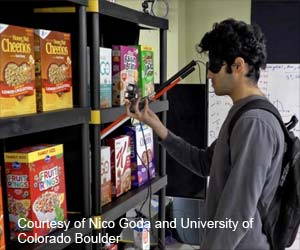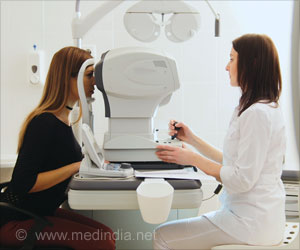- AiSee, a wearable assistive device, empowers visually impaired individuals by using AI to identify and provide information about objects
- The device’s human-centric design incorporates a discreet bone conduction headphone, challenging the traditional camera-equipped glasses
- AiSee’s components include a micro-camera, cloud-based AI algorithms, and bone conduction technology, ensuring operational autonomy and affordability
For many, the act of grocery shopping is a routine, almost automatic part of daily life. However, for those with visual impairments, this seemingly simple task can become a daunting challenge. Recognizing the need for enhanced support, a team of researchers from the National University of Singapore’s School of Computing (NUS Computing) has introduced AiSee, an innovative and affordable wearable assistive device. AiSee’s primary goal is to empower individuals with visual impairments by providing them with a unique way to ‘see’ and identify objects around them through the power of artificial intelligence (AI).
One of the significant hurdles faced by individuals with visual impairments is the identification of everyday objects. This challenge extends beyond the basic act of recognizing items; it directly impacts their ability to make both simple and complex decisions in their daily lives. While strides in AI have significantly improved visual recognition capabilities, the practical application of these technologies remains a complex and error-prone endeavor.
’
Advertisement
AiSee: A Five-Year Evolution
Developed initially in 2018 and continually upgraded over five years, AiSee is positioned as a solution to overcome the limitations faced by visually impaired individuals in object identification. The key innovation lies in its utilization of state-of-the-art AI technologies, making it a valuable tool for daily life.
Lead researcher of Project AiSee, Associate Professor Suranga Nanayakkara from the Department of Information Systems and Analytics at NUS Computing, emphasizes the human-centric design philosophy behind AiSee. The researchers questioned the conventional approach of using glasses augmented with a camera, considering potential reluctance among users to wear glasses due to stigmatization. As an alternative, AiSee incorporates a discreet bone conduction headphone.
Advertisement
How AiSee Works
AiSee operates on a simple premise, allowing users to hold an object and activate the in-built camera to capture an image. The AI within AiSee then identifies the object and provides additional information when queried by the user.
Advertisement
Components of AiSee
The Eye: Vision Engine Computer Software
- AiSee incorporates a micro-camera, forming the ‘vision engine computer software.
- This software extracts features such as text, logos, and labels from captured images for processing.
The Brain: AI-Powered Image Processing and Interactive Q&A System
- After capturing an image, AiSee uses cloud-based AI algorithms to process and analyze it, identifying the object.
- Users can interact with AiSee by asking questions about the object, leveraging advanced text-to-speech and speech-to-text recognition.
The Speaker: Bone Conduction Sound System
- AiSee’s headphone uses bone conduction technology for sound transmission through the skull.
- This ensures that visually impaired users receive auditory information while retaining awareness of external sounds, critical for decision-making in various situations.
Operational Autonomy and Affordability of AiSee
Unlike many wearable assistive devices that require smartphone pairing, AiSee operates as a self-contained system, enhancing user convenience. The researchers are actively working to make AiSee more affordable and accessible to a broader audience. This involves ongoing enhancements, including a more ergonomic design and a faster processing unit.
User testing, in collaboration with SG Enable in Singapore, is currently underway to refine and improve AiSee’s features and performance. Notably, B.P. De Silva Holdings Pte Ltd has generously contributed S$150,000 to support the project, highlighting a commitment to corporate social responsibility and inclusivity.
Ms. Ku Geok Boon, Chief Executive Officer of SG Enable, emphasizes the transformative potential of AiSee. She envisions innovative solutions, enabled by assistive technologies, changing the lives of persons with disabilities, supporting independence, and lowering barriers to employment.
Beyond the current project, SG Enable expresses interest in further collaboration with NUS to explore how AI, human-computer interface, and assistive technology can offer more technological options for persons with disabilities. This collaborative effort reflects a commitment to ongoing advancements that enhance accessibility and inclusivity, underlining the transformative power of technology in creating a more equitable and inclusive world.
References:
- NUS researchers develop AI-powered ‘eye’ for visually impaired people to ‘see’ objects
https://news.nus.edu.sg/ai-powered-eye-for-visually-impaired-people/
Source-Medindia



